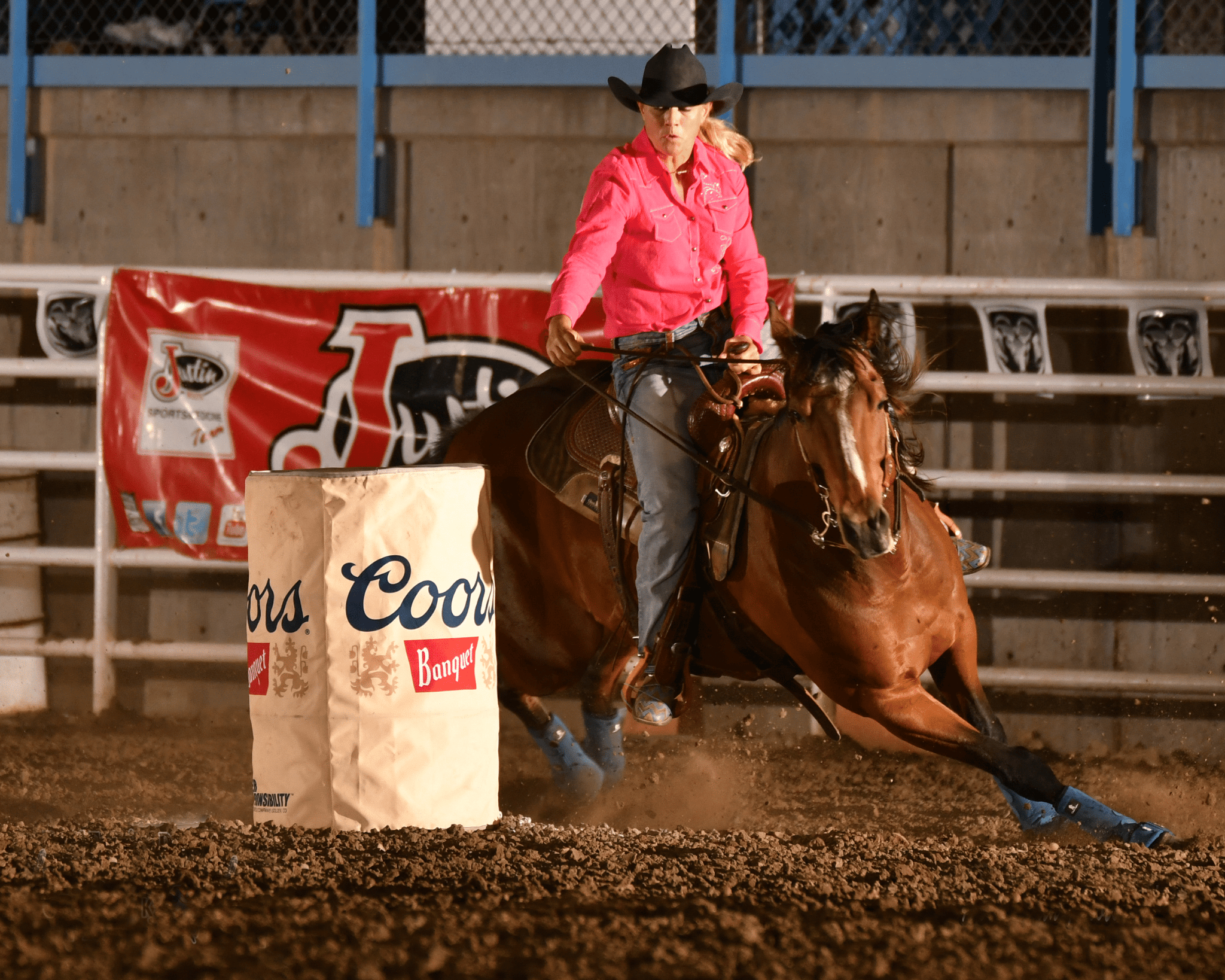Watching a rodeo is a good time, whether you know what’s going on or not. It’s about as American an experience as you can imagine. However, you can enjoy it a lot more if you have some idea of what’s going on.
This article is the second part of our three-part beginner’s guide to rodeo. Here we will break down the timed events so you can understand how scoring works and how winners are determined. The first part covered rodeo history and the state of the game today, and the third part will cover rough stock events.
Timed Events
Timed events are derived from the core skills traditionally required of a cowboy, which are horse handling, cattle management, and roping. These events measure timing, finesse, skill, speed, precision, and awareness for both the cowboy and their horse.
As the name suggests, the events are timed, and the competitor with the fastest time wins. Penalties can be incurred, which add seconds to your total time.
It should also be noted that these events are not a competition against the animal. Instead, the cowboys tend to see themselves as working in tandem with the animal for the common goal of winning the competition. They are not here to hurt or mistreat the cattle they compete with.
Tie-Down Roping
Also called calf roping, tie-down roping is the oldest timed rodeo event and tests the most fundamental skill of a cowboy: capturing cattle. In this event, a mounted competitor chases down and immobilizes a running calf, just as they would on a cattle ranch. This is essential for capturing injured or sick animals to provide medical treatment.
First, the calf is given a running head start, which is measured by a barrier rope. Once the calf has run beyond the barrier rope, the cowboy can begin the chase. Next, the cowboy tosses a rope lasso over the head and neck of the animal to slow it down.
With the calf lassoed, the cowboy dismounts his horse and approaches the calf. Meanwhile, the horse assists by keeping the capture lasso taught to hold the calf in place. Using a second smaller rope, the cowboy will secure three of the animal’s legs to fully immobilize it, then throw his hands in the air to signal completion of the challenge.
This entire process usually takes around seven seconds, with the world record clocking in at just over six seconds. The calf must remain tied up for a minimum of six seconds in order for an official score to be registered, and the cowboy with the fastest time wins.
If the calf tips over before the cowboy has a chance to tie it up, he must wait for the calf to stand up again, which can eat up significant time. Other penalties can occur if the cowboy is unnecessarily rough with the calf, or if the Cowboy begins his pursuit before the calf has run beyond the barrier rope.
An alternative version of this event is called breakaway roping, which doesn’t require the competitor to tie the animal’s feet. Supposedly, this version of the event is more humane. However, it should be noted that animal injuries in tie-down roping (or any rodeo event) are extremely rare. Rodeo competitors are professional cowboys who often work with cattle daily and have no interest in causing harm to the animals.
Team Roping
In principle, team roping is similar to tie-down roping in the sense that a mounted cowboy is trying to secure a running calf using a lasso. The difference here is that two cowboys work in tandem to accomplish the task. Team roping is unique in that men and women can compete together, the only rodeo event where this is allowed.
This event is also called “heading and heeling” because one rider lassoes the head while the other lassoes the feet. As with tie-down roping, the two riders must wait until the calf passes the barrier rope before they can pursue.
First, the header will secure the lasso around the horns, the neck, or both. Next, the heeler moves into position to secure the feet. Once head and heels are secure, the two riders slowly move away from each other to gently tighten the line and lock the animal in place. At this point, the official time is taken, and the animal is released.
A five-second penalty occurs if the heeler ropes only one of the steer’s hind legs, and a ten-second penalty occurs if a rider breaks the barrier rope too early.
Steer Wrestling
While all rodeo events present some danger, steer wrestling is no doubt the most dangerous. This makes sense because this skill was never a part of traditional cowboy life but was instead created in the 1890s as another spectacle to add to rodeo shows. In any case, it has become a mainstay of pro rodeo competitions.
The basic idea of steer wrestling is simple. Once the steer clears the barrier rope, a mounted rider chases down the running animal, leaps from his horse onto the steer, grabs it by the horns, and wrestles it to the ground.
Of course, jumping from a running horse onto a horned animal presents some challenges, the most obvious being that the cowboy can be impaled by the horns. He could also be trampled by the steer or by his own horse, or he could just crash into the ground. Needless to say, this is a competition for the fearless.
At the professional level, the entire process takes between three and ten seconds. A ten-second penalty is incurred if the rider breaks the barrier rope too soon. Also, as with tie-down roping, if the steer falls over before the competitor can wrestle it down, the cowboy must wait for the animal to stand up, then wrestle it down again. Finally, if the competitor leaps from his horse and misses the calf entirely, he is given “no time,” which means no score is recorded.
Barrel Racing
In this event, a rider and horse maneuver through a triangle-shaped course, marked off by barrels positioned in each corner. As fast as possible, the rider races around the barrels in a cloverleaf pattern. This event tests the rider’s horse-handling skills as well as the intelligence and athleticism of the horse.
The competitor who completes the course in the fastest time is the winner. If the rider knocks over any barrels, five seconds are subtracted from the rider’s time, which will almost certainly result in defeat. However, the rider is allowed to grab a barrel to stop it from falling.
Barrel racing was originally developed as a women’s sport. The idea was to develop a competitive event that could give women a place in the rodeo. These days, both men and women compete in barrel racing, though it’s still generally regarded as a women’s competition at the professional level.
Conclusion
The events listed above represent the core timed events you will likely encounter at a rodeo. Other events (e.g., children’s goat roping) often take place at rodeos, but will not be part of the main competition. In any case, once you understand these events, understanding other timed events is pretty simple as many of the rules and concepts are consistent.
In the third article in this series, we will take a look at the other half of rodeo competition: rough stock events. For more great content about visiting Garden City and Finney County, check out our main site.


